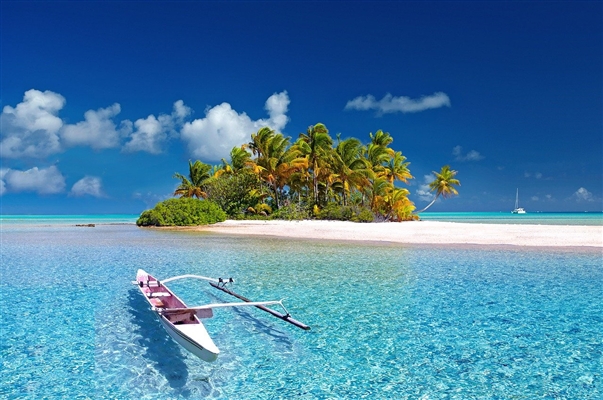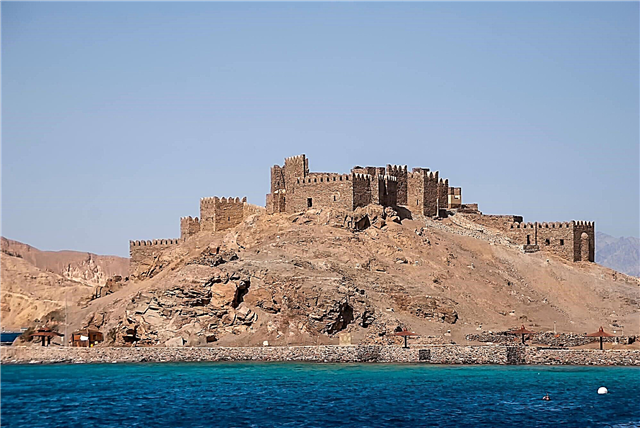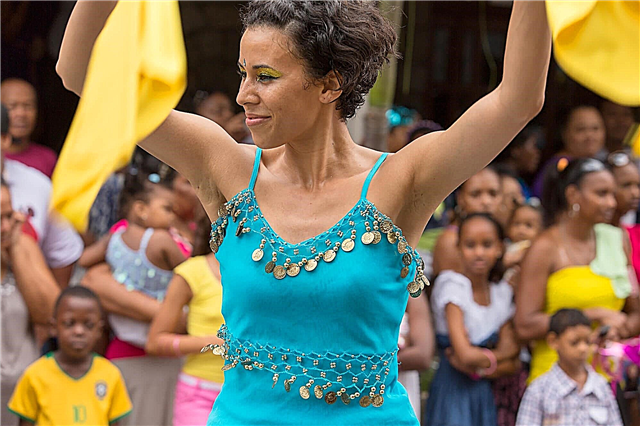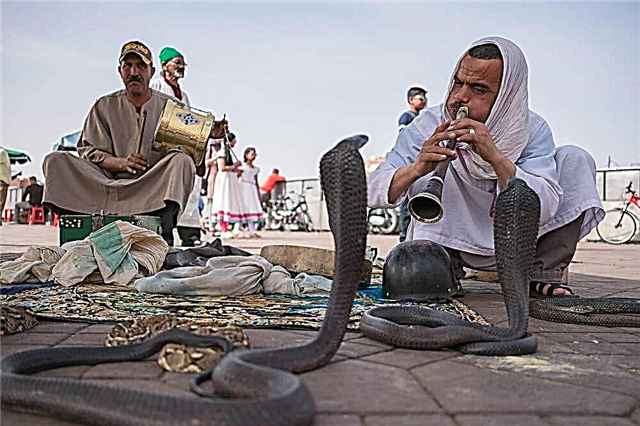Kaliningrad is a city with a rich history that until 1945 belonged to East Prussia and was called Koenigsberg. The German past could not but be reflected in the modern appearance of the city, its sights and architecture. Preserved as ancient, centuries-old architectural monuments - the building of the Stock Exchange, and elements of fortifications - seven city gates, towers of Don and Wrangel.
Special attention in the city is paid to the memory of its fellow countryman - the philosopher Immanuel Kant. The island is named in his honor, on which the grave of Kant is located near the walls of the ancient cathedral. Do not forget about the nature of Kaliningrad. Worthy of attention is a large botanical garden, artificial lakes within the city, the Pregolya River, on which the large Kaliningrad port is based. The main natural attraction is the Curonian Spit, protected by UNESCO.
The most interesting and beautiful places
List, photo with names and descriptions of popular sights of the city.
National Park "Curonian Spit"
A narrow strip of land between the Baltic Sea and the Curonian Lagoon. One of the largest sand mounds in the world is located 50 km from Kaliningrad and is a popular destination for eco-tourists. The length of the Curonian Spit peninsula is slightly less than 100 km, the width does not exceed 4 km. The main feature of the national park is the diversity of its natural landscape, unique ecosystems.

"Fish Village"
The city quarter, notable for its unusual architecture. This area is stylized in German antiquity and its appearance resembles the pre-war Königsberg. Its construction began in the early 2000s, and during this time "Rybnaya Derevnya" has become a popular place for walking among both guests and residents of the city. When constructing the buildings, the “half-timbered” style was used, and in their appearance they are similar to the buildings of the Order's architecture.

House of Soviets
This building is called one of the symbols of the bygone era of the USSR in Kaliningrad. Also, the House of Soviets is considered the main long-term construction of the city - its construction began in 1970 and has not yet been completed. In the original design, the building was supposed to be 28-storey. Currently, the building of the House of Soviets is a monumental structure of two rectangular 21-storey towers in the city center, 95% completed.

Amalienau historic district
Previously, this territory housed a noble estate. Now it is an area with an unconventional form of development for the city. It is distinguished by many winding streets, circular squares and alleys with rare bushes. Most of the low-rise buildings in the quarter are made in the Art Nouveau style with elements of neoclassicism and romanticism. Many buildings were built according to individual designs by renowned city architects.

Museum of the World Ocean
It was founded in 1990 and stores more than 50,000 unique exhibits in its funds. Its expositions are devoted to the geology and hydrology of the World Ocean, shipping, marine fauna and flora. The exhibitions are housed not only in the main building of the museum, but also in ships and a submarine moored at the pier of the museum. Also on the embankment are some of the museum's exhibits - the Irbensky lighthouse, a seaplane, a salt bathyscaphe.

Königsberg cathedral
The currently inactive cathedral, founded in 1333. The brick building was erected in the Baltic Gothic style. It is an architectural monument and a cultural heritage site. The philosopher Kant is buried near the walls of the cathedral. Only a few stone epitaphs have survived from the original interior decoration. The building of the cathedral is used for concerts, as well as for placing museum exhibits.

Kaliningrad Zoo
One of the oldest zoos in the country - it has been operating for over 100 years. It is located in the city center and is famous for its ancient sculptures and monuments of pre-war architecture. Elephants now live in one of these buildings. The zoo contains about 300 species of animals. The total number of inhabitants of the zoo is more than 3000. Unique and rare plants grow in the arboretum on the territory.

Kaliningrad Central Park
The total area of the park is 47 hectares. Trees and plants planted in the pre-war years still grow on its territory. Among the forested area there are fountains, attractions, a concert hall, cafes and significant sights of the city - the Kirch in memory of Queen Louise, a decorative colonnade, and the imperial hunting house. An unusual monument is the sculpture of Baron Munchausen. In winter, a skating rink is flooded in the park.

Cathedral of Christ the Savior
Cathedral, founded in 2006 by the architect Kopylov. It is called the most innovative and youngest temple in the city. The style of the temple resembles the style of the Vladimir-Suzdal temple architecture. An unusual solution was the large-scale glazing of the temple, it seems that the rays of the sun penetrate it from all sides. Located on Victory Square. The height of the temple is 51 meters. Accommodates about 3000 people.

Kaliningrad port
Port of the Baltic Sea at the mouth of the Pregolya River. It is a huge complex consisting of several ports for different purposes - trade, river, fish. In total, the Kaliningrad port has about 50 berths, with a total length of more than 20 km. The year 1339 is considered to be the beginning of the history of the port. The rapid development was facilitated by the short distance to major cities in Europe - from 400 to 600 kilometers.

Historical sites and landmarks
Memorable historical places of Kaliningrad.
Fort number 5 - King Frederick William III
It was erected at the end of the 19th century and was one of the defensive elements in the defense of Konigsberg during the Second World War. It is a structure 215 meters long and 105 meters wide. In Soviet times, a memorial complex with an open exposition was founded at the walls of the fort, and a museum of military equipment and fortifications was opened in the casemates of the fortress. Its expositions are among the most visited in Kaliningrad.

Memorial complex "Monument to 1200 Guards"
The memorial is a mass grave for 1200 soldiers who died during the assault on Königsberg in 1945. It is located on Gvardeisky Prospekt, where military parades are traditionally held. The dominant feature of the monument is the obelisk in the form of a five-pointed star. Since 1960, an eternal flame has been burning in front of the obelisk. The complex is surrounded by concrete slabs carved with the names of the fallen soldiers. A chapel was erected not far from the complex.

Tomb of Immanuel Kant
Located on the island of Kant among the Pregolya River. The philosopher's grave near the walls of the Cathedral is visited annually by thousands of tourists and admirers of his teachings. Kant was the last person to be buried in the "professorial tomb" of the cathedral in 1804. In 1996, during the restoration of the cathedral, Kant's grave was also restored. In the columnar tomb, the dates of the life of the scientist are engraved, as well as a cenotaph - a stone coffin.

Monuments of architecture and urban planning
Beautiful architectural landmarks and infrastructure.
Königsberg Stock Exchange building
It was built at the end of the 19th century on the embankment of the Pregolya River not far from the Trestle Bridge. Built in the style of the Italian neo-Renaissance, it has elements of classicism. Consists of two parts - a large hall and a covered gallery leading to the river. The building of the stock exchange is decorated with sculptures of lions by Hundrieser. The building has the status of an architectural monument. It currently houses the Fine Arts Museum.

Wrangel Tower
Built as part of a single defensive complex in the 19th century. The tower was designed by the architect and military engineer von Heil and Irfügelbrecht.The tower has a diameter of 34 meters and a height of 12 meters. The purpose of the tower is to defend the poorly defended Upper Pond. During the Second World War, the tower was used as a military hospital and then as a stronghold. The tower can only be viewed from the outside.

Football stadium "Kaliningrad"
Built in preparation for the 2018 FIFA World Cup. It has a capacity of over 35,000 people and is impressive in size. The total area of the entire territory is more than 24 hectares. The size of the field is 105 * 68 meters. The prestigious sports ground often hosts international competitions. The Kaliningrad stadium is called one of the safest at the 2018 World Cup - it has more than 1000 CCTV cameras.

Square of victory
The main square of the city, located in its historical center. The name was given to it after the end of the Second World War. The main temple of Kaliningrad, the Cathedral of Christ the Savior, is located on the square. After the reconstruction, fountains, the Triumphal Column, and a railway tunnel appeared on Victory Square. The square is an important transport hub and a place of concentration of large trade and administrative buildings.

Trestle bridge
A major transport artery of the city that runs through the Pregolya River and crosses the Kant Island. In addition, for tourists, the bridge is an excellent panoramic observation deck. The river port and the Cathedral are perfectly visible from it. Built in 1972. Its length is 546 meters, width is 28 meters. It is crossed by a tram line, lanes for cars, as well as pedestrian sidewalks with slopes into the park area.

Temples of Kaliningrad
The churches and churches of the city are religious sites and beautiful architectural monuments.
Juditten Church
One of the oldest buildings in the city - built in 1288. The construction of the church was carried out by the Teutonic Order. The base of the church is made of rough cobblestones, and the upper part is made of cut stones. During the years of Soviet power, the old building was partially destroyed; restoration was carried out in the 80s of the XX century. Now the church houses the St. Nicholas Church, which is one of the most visited parishes in Kaliningrad.

Church of St. Adalbert
Formerly a Catholic chapel. Built in 1904 under the direction of the German architect Heitmann. It is a chapel in the Gothic style. A narrow tower is located on its northern side, and buttresses on the other three sides. In the stained glass window niche on the east side, Saint Adalbert is depicted on a gold background. The best craftsmen of the Czech Republic were engaged in the production of stained glass. The altar is decorated with a two-meter statue of the Virgin Mary.

Church of the memory of Queen Louise
Historic building, formerly a Lutheran church building. The church was built in 1899-1901. Currently, it houses the Kaliningrad Puppet Theater. The architecture has features of the romance style with modern elements. The building is 47 meters long, 22 meters wide, and the middle nave is 12 meters high. It has two towers of different heights, one of them with a clock. The interior has been redesigned for a modern purpose.

Church of the Sagrada Familia
The Catholic Church of the Sagrada Familia is one of the most impressive structures built by the architect Heitmann. Red brick was used in the construction, and the foundations of the building layout were taken from the structures of the Teutonic Order. Built in 1907, renovated in 1980. After restoration, the building of the church housed the Kaliningrad Regional Philharmonic. An organ with 3600 pipes has been installed.

Holy Cross Cathedral
Foundation date - 1930. Previously - a Lutheran-Evangelical church, now - an Orthodox cathedral. The building is shaped like a Greek cross. The main part of the building is a huge niche portal. Its surface is decorated with a panel of Kadinsky majolica. Two domed towers rise above the façade. The facing of the building is made with decorative bricks. The architecture is a mixture of Gothic styles with Art Nouveau and Neoclassicism.

City gates of Kaliningrad
Popular city attractions surrounding the historic city center.
Friedland gate
The red brick fortification was built in 1862. The neo-Gothic gate was built under the direction of the architect Stühler. The sculptor from Berlin Sturmer was involved in the design of the facades. The name of the gate is given after the former name of the city of Pravdinsk - Friedland, to which the road led through this defensive structure. The building of the gate houses the museum of the city's defensive history.

Brandenburg Gate
They are located on the border of the historic Haberberg district and are used for their intended purpose. Built in 1657, they were originally wooden. 100 years after its foundation, the gate was renovated - the material of the building was replaced with brick, lancet driveways appeared. During the restoration in 1843, the gate was decorated with sandstone flowers, decorative pediments, and sculptural portraits.

Royal gate
The gates on this place have existed for several centuries - Kalthof, Gumbinnensky. The gate received its modern appearance in the neo-Gothic style at the beginning of the 19th century during the modernization of the city fortifications. In the 20th century, they lost their protective function and became a kind of triumphal arch. At the end of the 20th century, the building of the gate housed a bookstore, cafe, warehouse. The restoration of the Royal Gate was made only in 2005.

Zakheim gate
They are part of the internal fortification. They are a massive and durable structure with an arch for passage. Towers topped with decorative crowns are erected on the sides. The gate, built in the middle of the 19th century, has long served as a checkpoint. Currently, the building is occupied by the "Gate" art space. Exhibitions, film festivals, lectures, master classes are held.

Rossgarten gate
They were built in the middle of the 19th century and form a single architectural ensemble with the Dona tower. Gothic forms can be clearly seen in the facade of the gate. To pass through the gates, a passage in the form of a pointed arch was built, framed by octagonal turrets. An observation deck is located between the towers. Currently, it houses the Solnechny Kamen restaurant, where the President of the Russian Federation dined during the celebration of the 75th anniversary of the city.

Friedrichsburg gate
The only surviving element of the Friedrichsburg fortress, built in 1657. The gate itself was erected in 1852 in the neo-Gothic style. Fired brick was used for construction. The restoration of the gate after damage during the Second World War and prolonged desolation began only in the 21st century. It is planned that after its completion, the Friedrichsburg Gate will become one of the branches of the Museum of the World Ocean.

Ausfalsk gate
The first version of the gate was built in 1626. Rebuilt in 1866, after which they became part of the Second defensive city wall. The building material is brick, the style is gothic. The gates were pedestrian, however, after the loss of the military protective function in the 20th century, the pedestrian passage was laid, and the gates themselves began to be used as a warehouse. In the 90s of the XX century, the chapel of St. George the Victorious.

Railway gate
Located next to the 1200 Guards Memorial. Through the gate you can go to the park next to the monument. Earlier, a branch of the railway passed through this opening. One of the lanes remained until the 90s of the XX century, later a pedestrian path was laid on top of it. The date of the foundation of the gate is indicated on the castle stone - 1866-1889. Since 2017, a planetarium named after V. Bessel, conferences and exhibitions are being held.

Natural sights of Kaliningrad
Gardens and parks, interesting and beautiful places where you can walk in the city.
I. Kant IKBFU Botanical Garden
It includes both open spaces and indoor greenhouses.The total area of the botanical garden is 13 hectares. It was founded at the beginning of the 20th century. The garden consists of several sections - subtropical, tropical, palm, succulent. It has flower beds, hotbeds, a small pond. Some of the plants are included in the Red Book. The best time to visit the garden and take photos is the flowering season - from April to September.

Pregolya river
The 132 km long river is formed by the confluence of the Instruch and Angrapa rivers. A large port of Kaliningrad is located at its mouth. On its banks there are many city attractions - the Kaliningrad stadium, the Rybnaya village, the House of the High Bridge caretaker, the Konigsberg Stock Exchange, the Pregel bastion, and on the embankment there is the Museum of the World Ocean. The river is inhabited, in addition to various types of fish, large northern crabs live in it.

Upper pond (Lake Upper)
An artificial reservoir in the city center. A popular place for walking for both residents and guests of the city. Founded in 1270 by the Knights of the Teutonic Lake. Formed by blocking the Pregolya River with an earthen dam. Currently, the shores of the lake are landscaped, a beautiful embankment is equipped, decorated with sculptures of sea animals. There are cafes, attractions, playgrounds, a boat station. The lake is home to swans and ducks.

Lower pond
Another artificial reservoir, formed in the XIII century. For a time, its waters were used to fill the moat at the Königsberg Castle. In the 20th century, it was decided to establish a recreational area around the pond. Old buildings were demolished, a promenade was laid, and the cascade from the Upper to the Lower pond was improved. Several bridges have been built across the pond, and there is a boat station. Nearby are the Amber Museum, the Rossgarten Gate and the Wrangel Tower.

Park of culture and rest "Yunost"
Located on the shore of the Upper Lake. The territory of the park and entertainment complex is 7 hectares. Here you can rent a boat, ride rides, enjoy the beauty of park alleys. There is a restaurant and a cafe, a 5D cinema, go-karting, a shooting range, a Ferris wheel, and a winter indoor ice rink. A monument to the soldiers-internationalists is erected in the park. Theatrical performances, concerts, festivals are regularly held.

Pond Float
The second unofficial name is Bread Lake. The name of the pond "Gemini" is also known. Consists of two parts connected by three ducts. There are two small islands between the channels, which are connected by pedestrian bridges. The pond was created at the beginning of the 20th century. At the beginning of the XXI century, its reconstruction was carried out - the bottom was cleaned, the banks were fortified, lighting was installed on the embankment, and places for recreation were equipped.

Cultural landmarks of the city
Places of cultural education are the main museums and theaters in Kaliningrad.
Kaliningrad Regional Amber Museum
It is located in the fortification - in the Dona tower. In the 70s of the XX century, the Amber Museum was founded there. The reason for the foundation of the museum in this place was the close proximity to the deposit of the Baltic gem, in which about 90% of the world's reserves are mined. The museum was actively developed at the beginning of the XXI century - modern equipment appeared, various thematic exhibitions with unique exhibits began to be held.

Museum "Bunker"
An interactive museum that is part of the History and Art Museum. It is located in a reinforced concrete building of a former German bomb shelter, built in 1945. The expositions of the museum tell about the events that took place during the storming of the city in wartime. Visitors are presented with diagrams, plans, photographs, documents. A special exhibit is the wrought iron gate covered with runic symbols.

Kaliningrad History and Art Museum
Founded in 1946. The main building of the museum is the restored Stadthalle building, located at the Lower Pond, there are several branches in different parts of the city. The total area of the exhibition space is 3,500 m². The number of exhibits is over 100,000. Permanent and temporary exhibitions have different themes - archaeological, historical, artistic. The museum often hosts openings, festivals, and creative meetings.

Kaliningrad Regional Drama Theater
Opened in 1947. He is a participant in various festivals, including international ones. The theater is located in the building of the German Drama Theater, restored after the war according to the project of Kukhtenkov, the large hall is designed for 931 visitors. At various times, the People's Artists Peterov, Marcelli, Salez became the artistic directors of the theater. The theater's modern repertoire includes about 20 performances.

Monuments and sculptures of Kaliningrad
The most famous monuments decorating the streets of the city.
Sculpture "Fighting Bison"
Created by the sculptor-animal painter Gual. The artist Pablo Picasso also worked on the sketches of the project - he gave the movements of animals a naturalistic look. The monument was cast in bronze in 1911. It was planned that it would be installed in the castle of the archbishop in the city of Münster. However, the sculpture was installed near the fountain near the monumental building of the Supreme Court. Residents of the city began to call the monument "Prosecutor and Defender".

More information about the city's monuments in the article: 30 popular monuments of Kaliningrad
Monument to Immanuel Kant
Installed in the city center on University Square. The original bronze sculpture of the philosopher was made in Berlin. The author of the project is sculptor Christian Daniel Rauch. During the war, the monument was hidden in the estate of Countess Friedrichstein, but in the post-war period the sculpture was cut and scrapped. Harald Haacke was responsible for creating a copy of the sculpture. The restored monument was erected in 1992.

Monument to Friedrich Schiller
The monument to the playwright, poet and philosopher was created in 1910 by the German sculptor Stanislav Kauer. Initially, it was located near the City Theater, but in 1934 it was moved to the square near the New Theater. The sculpture suffered during the war from shell fragments, but in the 50s it was restored, and the years of Schiller's life and an inscription in Russian were added to the pedestal. It is currently located at Teatralnaya Square.

Fountain "Putti"
Located in the city center. Date of construction - 1908. It is a composition of four curly-haired angels holding hands. In 1912, "Putti" won first place at the international fountain exhibition in Posen. The inhabitants of this city wanted to buy the fountain, but the sculptor Stanislav Kauer preferred to give it to Konigsberg. Now it is located on the territory of the Old Port Landscape Park.












